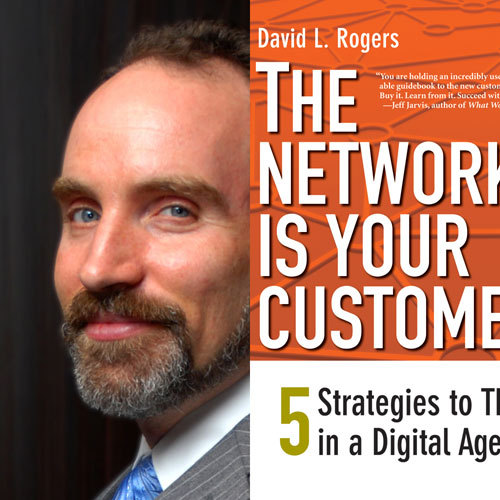 Steve Rubel is Chief Content Strategist for Edelman, the world’s largest public relations firm, so it shouldn’t come as a surprise that he is evangelizing about the importance of content marketing. Given that I happen to agree with Steve and having seen him speak at the Brite ’13 Conference, I was delighted to be able to dig into the topic a bit deeper with him after the fact. As you will see, there’s a lot more to content marketing than publishing a few articles. In fact, it requires a comprehensive approach including a clear strategy, a diverse blend of media (paid, earned and owned) and writers that know how to start conversations. But don’t take my word for it, read on…
Steve Rubel is Chief Content Strategist for Edelman, the world’s largest public relations firm, so it shouldn’t come as a surprise that he is evangelizing about the importance of content marketing. Given that I happen to agree with Steve and having seen him speak at the Brite ’13 Conference, I was delighted to be able to dig into the topic a bit deeper with him after the fact. As you will see, there’s a lot more to content marketing than publishing a few articles. In fact, it requires a comprehensive approach including a clear strategy, a diverse blend of media (paid, earned and owned) and writers that know how to start conversations. But don’t take my word for it, read on…
Neisser: So, what exactly is The Content Imperative?
Rubel: It’s the belief that creating content is no longer optional. Rather, it’s imperative given the significant economic changes that are taking place in both media and, resultantly, marketing. With more ads bought/sold through trading desks, advertising is now far more efficient and effective. This is great for the marketers, but it’s a nightmare for the publishers since it erodes their margins.
Faced with a lack of viable options for generating new/replacement revenues – e.g. subscriptions, significant increases in video views (which have a higher CPM) – media companies are increasingly becoming open to taking sponsored content. Sponsored content is poised to become a significant, possibly even a major new advertising format. And it’s for this reason why it’s now an imperative.
Neisser: When it comes to content marketing, what does success look like in terms of business metrics that a CEO or CFO would appreciate?
Rubel: The metrics of success really depend on the approach. Are you building an asset and trying to attract an audience to you or are you trying to engage the public on other lands? In the case of the former, it’s traffic that leads to sales. In the case of the latter, it’s impressions that create brand awareness and/or potentially lead to traffic and sales.
Neisser: Presumably content marketing provides some kind of competitive advantage. Can you provide a real world example or two of marketers that have gained competitive advantage via their content marketing efforts?
Rubel: Red Bull is just as known for the content it creates as it is for it’s brand attributes. The same is true for GE (an Edelman client). Both have a content vs a message mindset. One is a consumer brand effort, the other is corporate reputation.
Neisser: So, does this mean every marketer needs to become a publisher? And if every marketer in every category is pushing out their own content, at what point does the consumer say, enough already AND/OR at what point does content publishing no longer provide competitive advantage?
Rubel: Not necessarily. There could be a first mover advantage here in some categories. And, yes, it is possible that consumers won’t be receptive. That said, throughout history quality content has prevailed over junk no matter where it comes from. What’s different now is that the playing field has leveled. Brands have a viable way to get their message out and a cadre of media owners ready to help them do so.
Neisser: Creating great content is an art form that not every company can master. And of course, content is what media companies do really well. So, how can chocolate (marketing) & peanut butter (media) get together nowadays?
Rubel: Due to the economic underpinnings mentioned above, media companies are increasingly recognizing that content marketing is a viable revenue stream when done right. Many media owners have set up distinct content studios that exclusively serve marketers. They help customers understand their audiences, create content and build deeper relationships. However, they are limited to doing so within their walls.This is why we believe there will be opportunities for agencies like Edelman to integrate different partnerships in context of a broader program.
Neisser: Given an over-abundance of content (aka the WWW) and a dearth of free time (so we all say), should marketers be more focused on quality than quantity, striving to become a recognized curator rather than a prolific purveyor?
Rubel: Absolutely. Slow is the new fast. Quality is the new quantity. (Although these are old ideas) However, scale is still critical. As is consistency.
Neisser: Content publishing has the potential to be a one way street almost like traditional advertising. Where does social / conversation fit into the content marketing picture?
Rubel: The media owners seem open to experimenting on their social platforms. The faster we together make this about content as a means to building relationships, the better.
As always, if you enjoyed this post, feel free to share it with friends and subscribe to TheDrewBlog.



